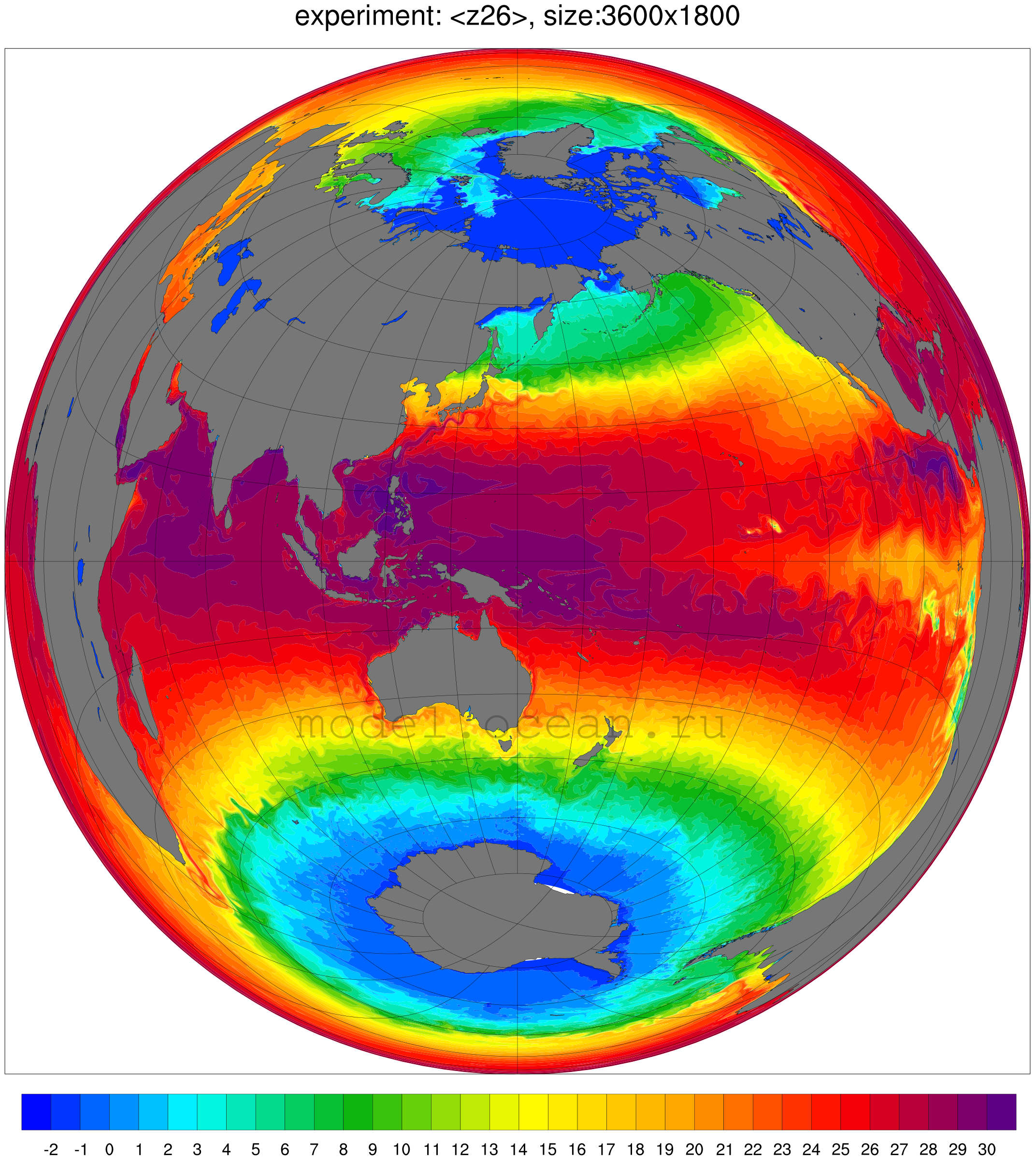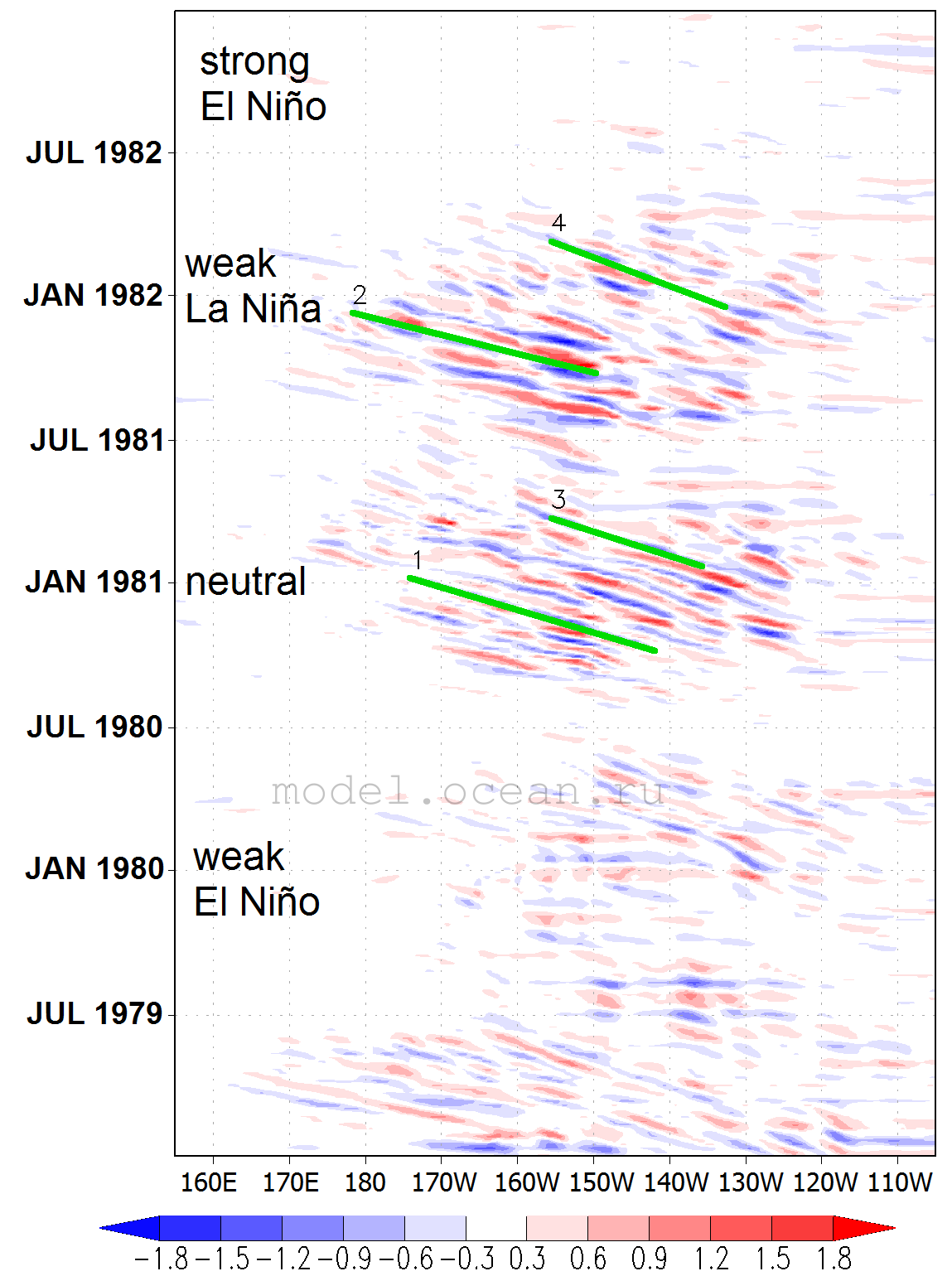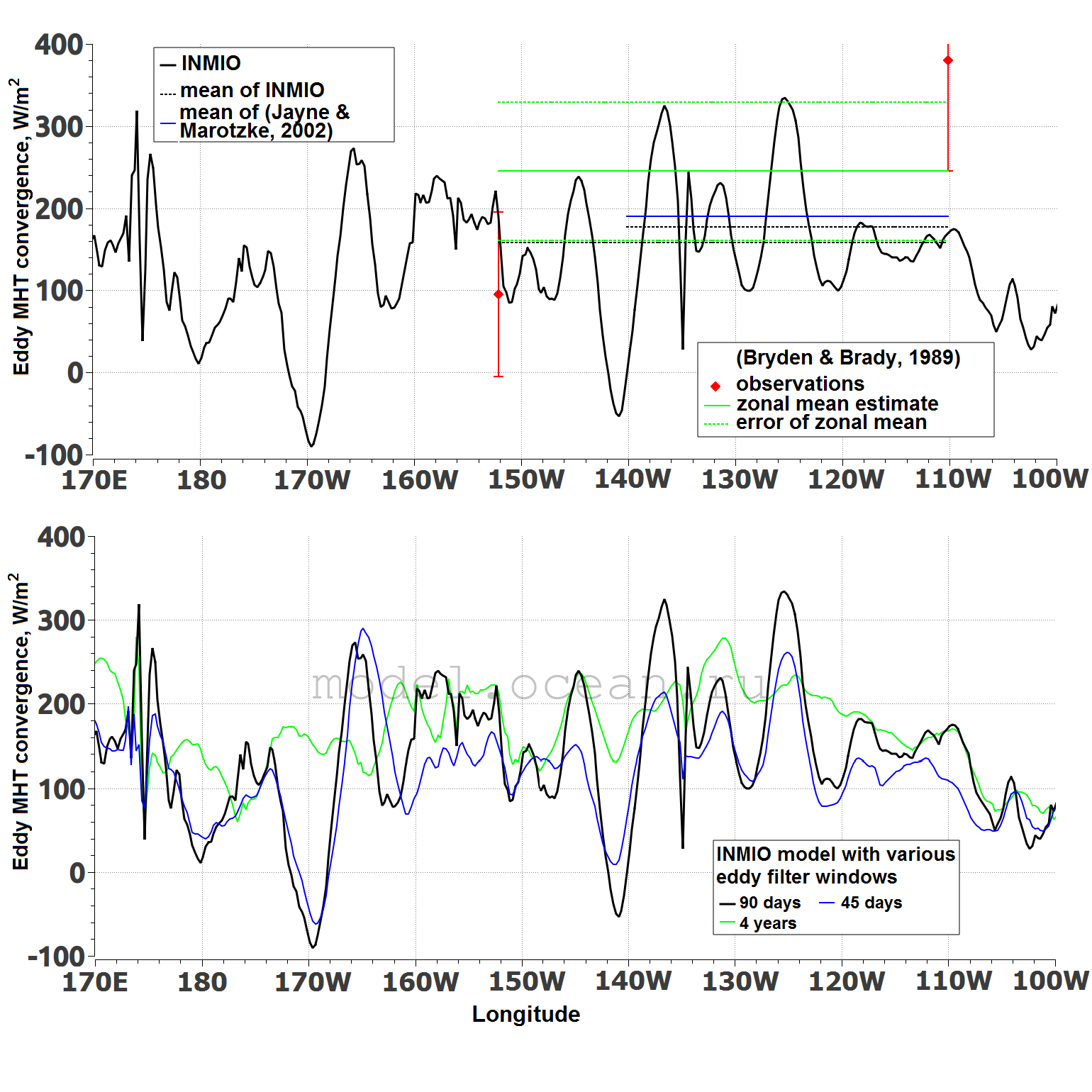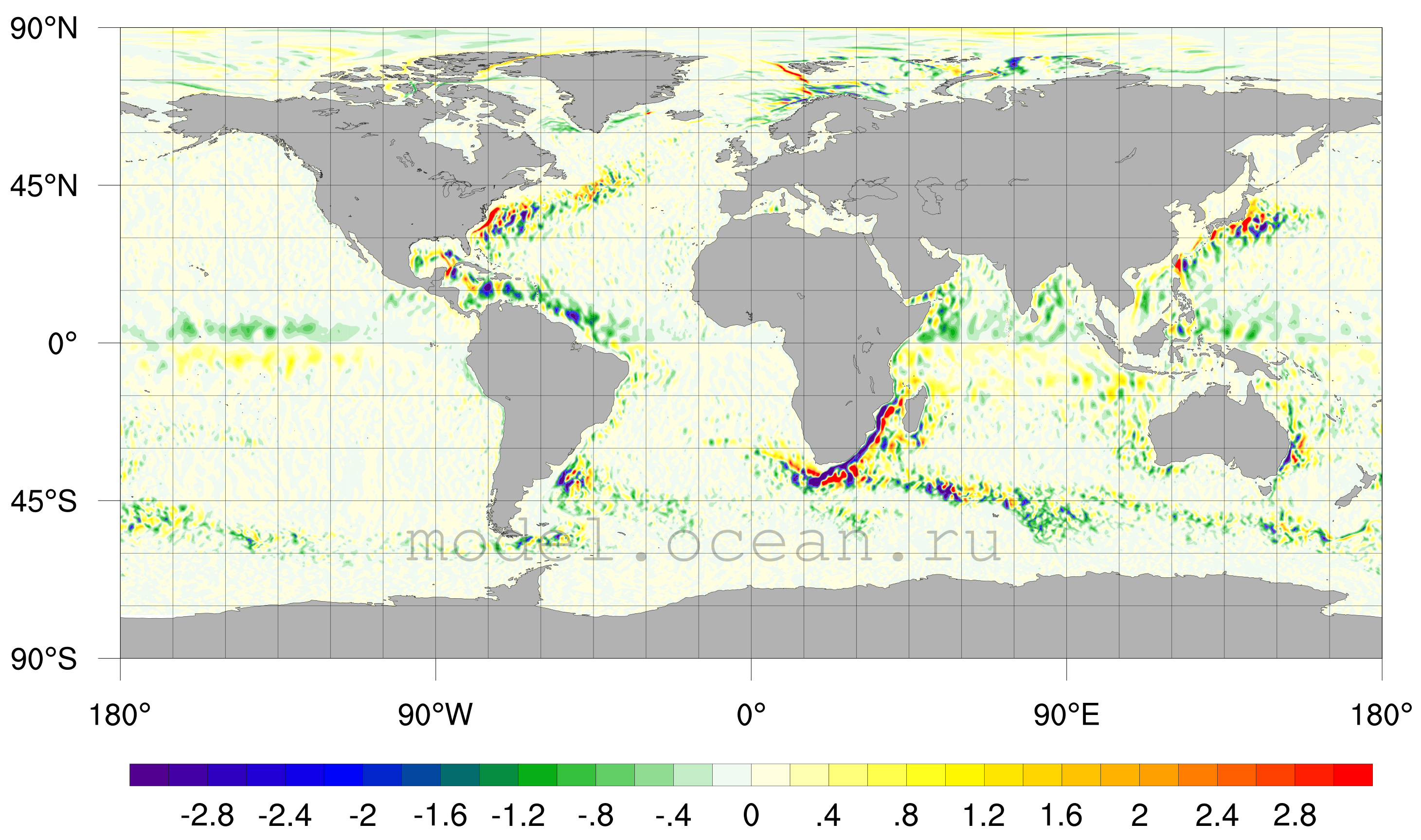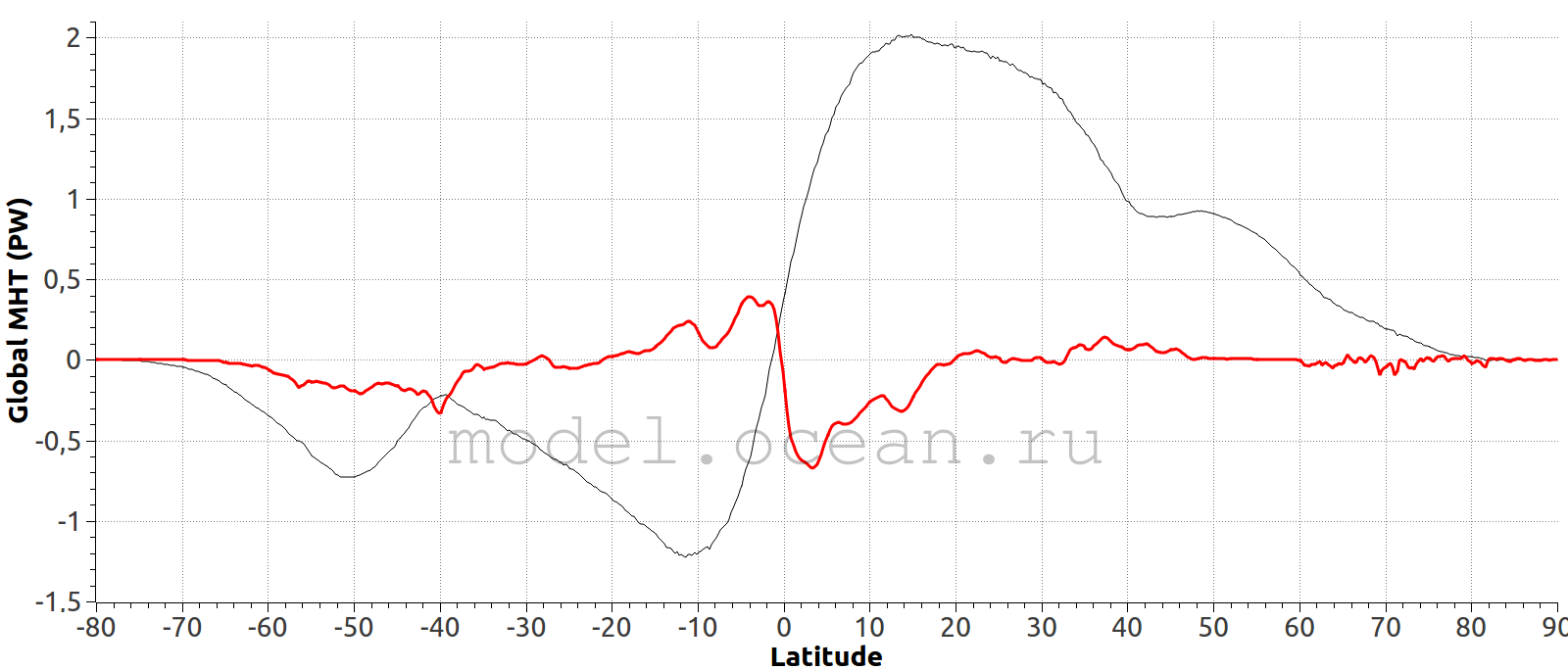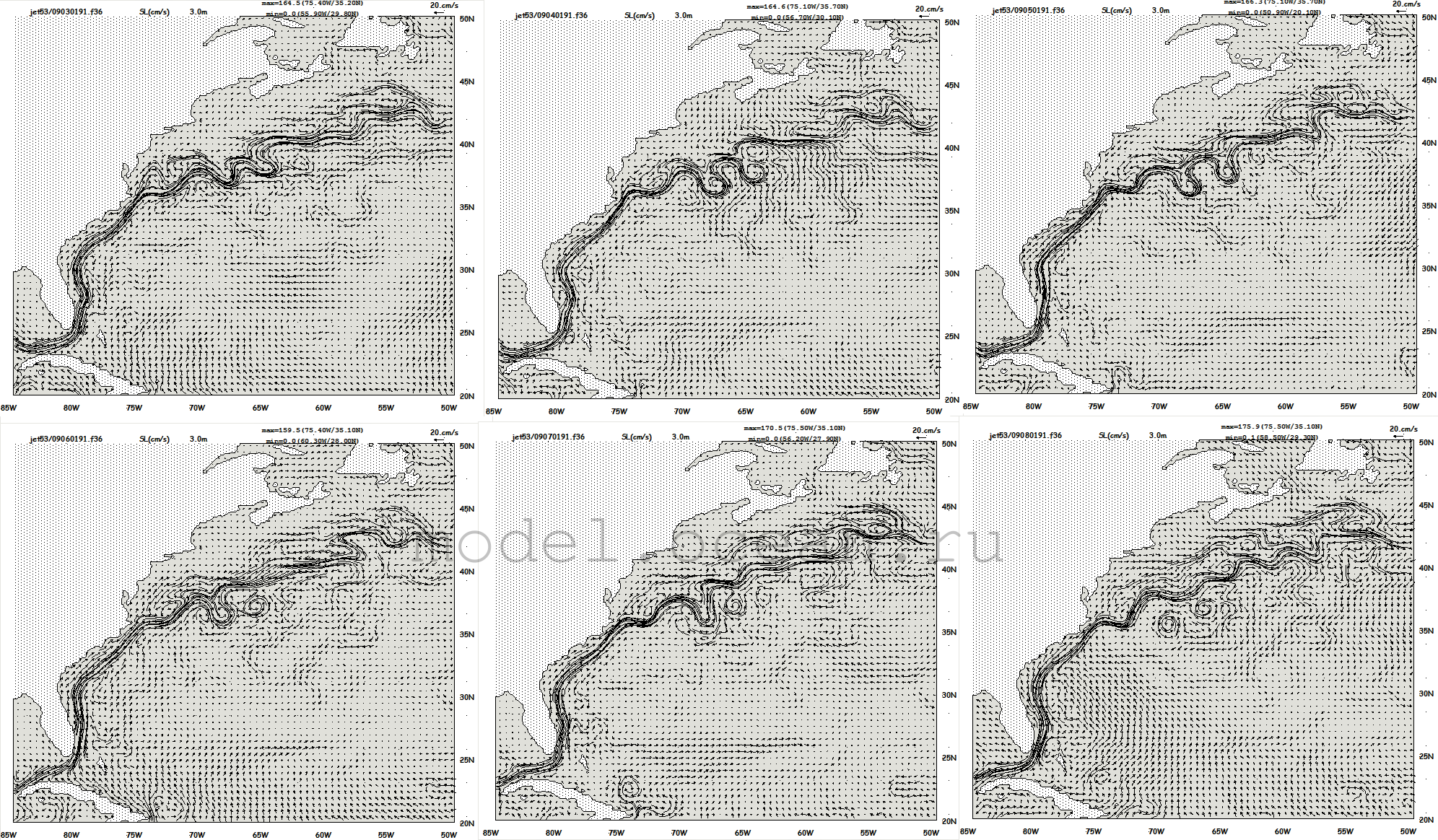Eddy-resolving modelling of the World Ocean
Modelling the World Ocean
The World Ocean circulation is one of the key mechanisms for the functioning of the Earth's climate system. The ocean transfers heat between latitudes and parts of the world, accumulates or reflects the radiation forcing, modulates the atmospheric circulation. Ice conditions and biological productivity of vast water areas, weather in coastal countries and long-term climate shifts on the scale of continents depend on the pattern of ocean currents. This difficult-to-predict system, with many direct and feedback connections that determine energy transfer over space and scales, transformation of water masses, accumulation and discharge of anomalies, climate trends and fluctuations, is the object of fundamental research and vital technologies of practical forecasting.
The study of global ocean processes requires a global model. At the same time, at the current level of our understanding of the ocean, it is no longer possible to ignore local processes, especially mesoscale eddies and pulsations, since they determine the ambient conditions in which the background large-scale circulation develops. Therefore, the modern research method is the global eddy-resolving numerical experiment.
By means of the INMIO model, eddy-resolving numerical studies of the World Ocean circulation are carried out. Their results reflect the diversity of dynamic structures in the World Ocean, including features of the Equatorial zone (upwelling, trapped waves), polar fronts, Antarctic circumpolar current, meandering of boundary currents (Gulf Stream, Kuroshio, Agulhas, etc.), and eddy formation.
One of the key study objects is the meridional heat transport (MHT). This characteristic is crucial for the Earth's climate, but difficult to be observed directly. Distributions of the MHT eddy component in the World Ocean and its particular basins were obtained in (Ushakov and Ibrayev, 2018a). It was shown that strong currents in interaction with the bottom relief and coastline can form two types of eddy transport structures – jet and ring. Under such conditions, the eddy transport may have a quasi-constant direction that does not coincide with the direction of the background mean flow. Moreover, it is found that eddies can transfer heat from cold to warm waters, thus showing negative effective thermal conductivity. This phenomenon is detected by the model, particularly, in the Eastern Equatorial region of the Pacific ocean, where shears between currents and counter-currents form tropical instability waves (Ushakov and Ibrayev, 2018b). Their intensity, in turn, plays a role in the development of El Niño – Southern Oscillation phases.
References in figure captions:
Ushakov and Ibrayev, 2018a
Ushakov and Ibrayev, 2018b
Jayne & Marotzke, 2002
Bryden & Brady, 1989
Ibrayev et al., 2012
Ushakov and Ibrayev, 2019
Khabeev, 2013

